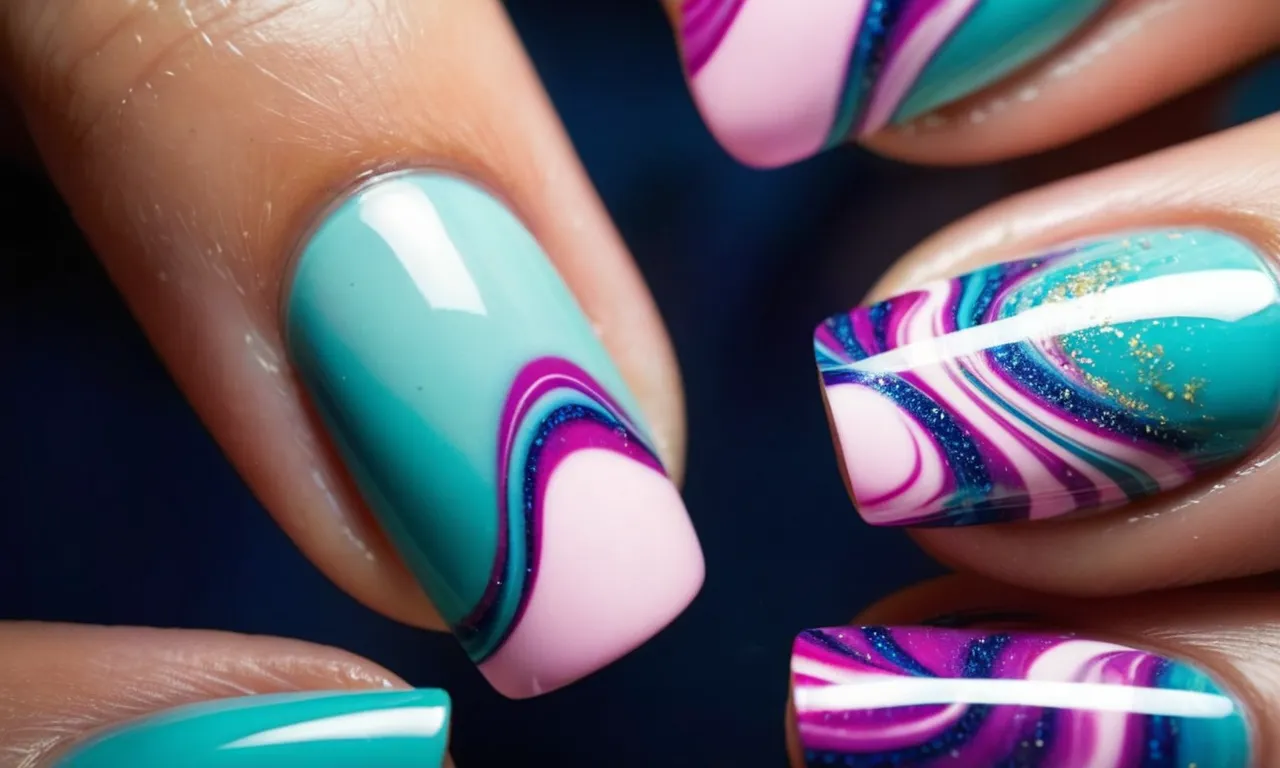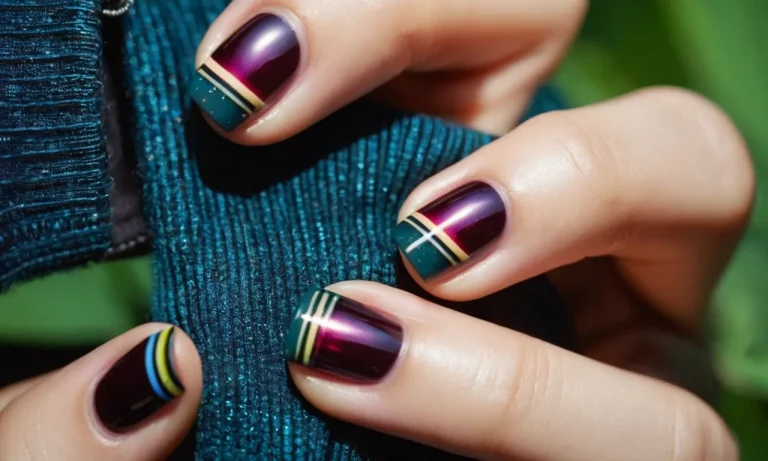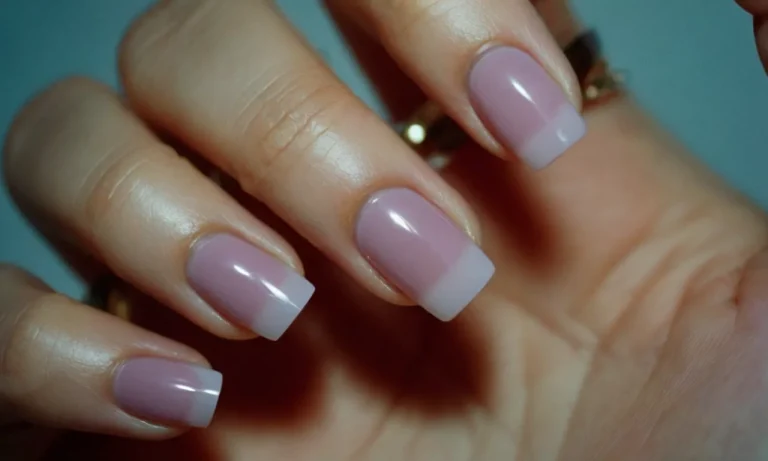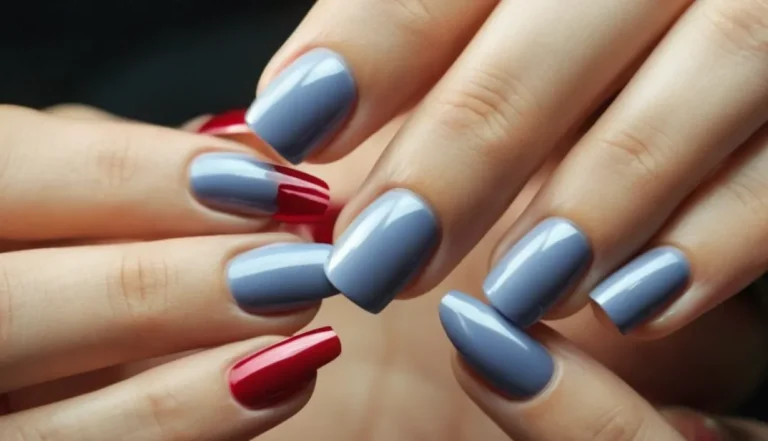A Comprehensive Guide To Acrylic Nail Powder And Liquid
Welcome to the complete acrylic nail guide! Looking fabulous is as easy as understanding the products you use. So if you want stronger, longer nails without harsh chemicals, acrylic powder and liquid may be right for you.
In a rush? Acrylic powder and liquid are combined to form a durable, customizable acrylic nail formula. The liquid contains a polymer and monomer that harden into plastic when mixed with the colored acrylic powder.
Together they create beautiful, resilient acrylic nail enhancements of any shape and length.
In this all-you-need-to know guide, we’ll explore the ingredients, application method, maintenance requirements and more for acrylic nails. Read on to discover if powder and liquid acrylics are the way to go for your fab manicure.
What Are Acrylic Nail Powder and Liquid?
Acrylic Powder Ingredients and Role
Acrylic nail powder is mainly composed of polymethyl methacrylate (PMMA), an acrylic polymer. It may also contain dibenzoyl peroxides which act as polymerization initiators to help the acrylic liquid turn into a solid upon application.
The main role of the acrylic powder is to provide strength, durability and structure to artificial nails.
There are several types of acrylic powder:
- Clear acrylic powder – provides a natural, transparent look
- White acrylic powder – creates an opaque, solid color
- Pink acrylic powder – gives a natural, pinkish nail bed look
- Colored acrylic powders – various shades are available for creative color designs
Acrylic Liquid Composition and Purpose
The acrylic liquid is composed of monomers such as ethyl methacrylate (EMA) and methyl methacrylate (MMA). It acts as a solvent for the acrylic polymer powder and allows it to set on the nail plate. The acrylic liquid causes the powder to form long chains of molecules that harden into a plastic-like material.
There are two main types of acrylic liquid:
- Methyl methacrylate (MMA) – Sets quickly but can cause nail damage and allergic reactions in some
- Ethyl methacrylate (EMA) – Slower setting but less likely to cause damage or allergies
How Powder and Liquid Work Together
The acrylic powder and liquid work together through a chemical reaction called free radical polymerization. When combined, the peroxide initiators in the powder generate free radicals. These interact with carbon double bonds in the liquid monomers and cause them to link up into long polymer chains.
The resulting plastic-like material hardens and forms an artificial nail coating.
To apply an acrylic nail:
- The technician applies a primer to prep the natural nail
- The liquid acrylic monomer is brushed over the nail
- Acrylic powder is sprinkled over the wet monomer
- The mixture is sculpted into the desired nail shape
- It hardens within minutes due to the polymerization process
The ratio of powder to liquid can be adjusted to achieve the ideal viscosity and setting time. Using the proper application technique is crucial for getting a durable, long-lasting acrylic manicure.
Acrylic Nail Application Step-By-Step
Prepare the Natural Nail
The first step is to thoroughly clean, buff, and dehydrate the natural nail plate using a nail file and prep solution to remove any oil and moisture. This creates a rough surface for the acrylic powder and liquid to properly adhere to.
An acrylic primer should then be applied to further prep and create bonding between the natural nail and acrylic.
Apply Nail Tips or Forms
Next, nail tips or forms need to be fitted and applied to act as a foundation and structure for building the acrylic nail. Tips are plastic plates glued at the edge of the natural nail while forms wrap around the entire nail and are held temporarily with tape.
Precise sizing and shaping is key in this step to support the accent nail shape.
Mix the Powder and Liquid
Now the magic happens! The acrylic powder, containing a polymer, and acrylic liquid, containing a monomer, are combined and mixed to initiate polymerization. This causes the mixture to harden into a durable, rigid plastic within minutes.
A ratio of 2:1 powder to liquid is ideal, but can be adjusted based on preference. The mixture is applied using a brush in multiple thin layers onto the prepared nail plate to build and extend the nail.
Shape and File
Once fully set and hardened, the sculpted acrylic nail is ready to be perfected! Filing and buffing refines the shape and smooths the surface. Length, thickness, sidewalls, edges, and smile line should be checked for symmetry and visually pleasing proportions.
Gentle filing is key to prevent cracking or damage.
Finish With Shine
The finishing touch is maximum shine! The nail surface is buffed to a high gloss finish for a glass-like effect. A hydrating oil rubs into cuticles and surrounding skin to rehydrate and soften. Regular nail oil application helps maintain flexibility and prevents cracking in acrylics long-term (www.byrdie.com).
Top it all off with a stunning nail polish color!
Caring for Acrylic Nails
Keep Nails Clean
Keeping acrylic nails clean is crucial for maintaining their appearance and health. Here are some tips for keeping them clean:
- Wash nails daily with soap and water to remove dirt, oil, and bacteria. Focus on cleaning under free edges.
- Use a soft-bristled nail brush while washing to gently scrub nails and remove debris.
- Rinse nails thoroughly after washing and gently pat dry with a towel.
- Use a nail wipe dipped in nail polish remover to remove residue around cuticles and underside of nails.
- Avoid submerging nails in water for long periods to prevent lifting and softening of the acrylic.
Moisturize Cuticles
Acrylic application and removal can cause dryness around the nail cuticles. Here’s how to keep cuticles healthy:
- Apply cuticle oil daily to hydrate and nourish cuticles. Look for oils with vitamin E and coconut oil.
- Gently push back cuticles after softening in warm water to encourage healthy nail growth.
- Avoid cutting cuticles, as this can damage the nail bed.
- Apply thick creams or petroleum jelly on cuticles before bed and wear cotton gloves overnight.
- Get regular manicures to trim overgrown cuticles.
File Rather Than Pick
Picking at lifting acrylic can worsen lifting and introduce bacteria. Instead:
- Use a fine-grit emery board to gently file away lifting edges.
- Apply nail glue sparingly under lifted edges and hold firmly for 30 seconds to re-adhere.
- Avoid metal tools like cuticle pushers to lift acrylic, as they can damage natural nails.
- See your nail technician promptly if lifting and cracking becomes excessive.
- Resist the urge to bite or pick at nails to avoid excessive damage.
Give Nails a Break
Allowing natural nails to recover between acrylic sets helps prevent damage. Some tips:
- Take a 2-3 week break between full sets or at least several days off between fills.
- Remove enhancements completely every 2-3 months and let nails breathe.
- Apply nourishing oils during breaks to condition nails.
- Avoid excessive filing and harsh chemicals on natural nails during breaks.
- If taking an extended break, taper off acrylics gradually to avoid shock to nails.
When to Get Fills
Getting timely fills preserves the look of the manicure and prevents lifting and cracking.
- Schedule fills every 2-3 weeks to fill the gap near the cuticle as natural nails grow.
- If more than 50% of the enhancement is grown out, a full set is needed.
- Well-applied acrylic can last 3-4 weeks between fills.
- See the nail technician promptly if you notice cracking, lifting, or excessive regrowth.
- Properly cared for acrylic manicures can last 6-8 weeks from application to removal.
Caring for acrylics requires diligence but pays off in beautiful, healthy-looking nails. Take time for proper cleansing, moisturizing, filing, and well-timed fills and removals. Your nails will thank you!
Acrylic Powder and Liquid Pros and Cons
Customization and Durability
One of the biggest pros of using acrylic powder and liquid for nails is the ability to fully customize the length, shape, and style. The mixture can be sculpted into whatever design you want and lasts much longer than a traditional manicure, often for up to 3-4 weeks between fills.
The strength of the acrylic also makes breaks and chips less likely compared to natural nails or gel manicures. For special events or just fun style experiments, acrylics open up many possibilities.
Harsh Chemicals
The biggest con associated with acrylic nails is definitely the harsh chemicals present in many powder and liquid systems. The odor alone indicates strong fumes that should raise red flags. Both acrylic powder and liquid contain concerning ingredients like methacrylates that can cause skin irritation, nail damage, or even respiratory issues when exposure is too high or ventilation is too low.
There are now powder and liquid sets advertised as odor-free, eco-friendly options but salon goers should still inquire about the specific composition.
Maintenance Requirements
While the durability and longevity of acrylic nails is a plus, the maintenance can also feel demanding compared to a simple polish change. Expect to book fill appointments every 2-3 weeks as your natural nails grow out to prevent any lifting or cracks between the enhancement and natural nail.
Skipping scheduled fills means risking injury and compromising the acrylic. There is also no removing acrylics yourself at home – they must be professionally soaked off to avoid excessive nail plate damage which further adds to the time requirements.
Cost Considerations
A single acrylic full set can range from $50-$250 with the average starting around $85 depending on your location and chosen nail tech experience level. Most salons bundle the removal cost into that initial set fee but maintaining fills every 2-4 weeks will also typically run $40-$85 per appointment.
While acrylics may be more cost effective long term than weekly polish changes, they still require a hefty upfront investment and consistent budget for fills. Considering you should also tip your nail tech 15-20%, the costs tally up quickly.
Acrylic vs Gel Nails Comparison
Application and Process Differences
Acrylic nails involve applying a liquid and powder mixture to nail tips or natural nails and allowing it to harden, while gel nails use UV or LED light to cure the gel polish or gel builder gel applied to the nails. The application process for acrylics also tends to take longer than gel manicures.
However, gels require a base coat and top coat in addition to gel colors or builders. Both options can last 2-4 weeks with proper application and care.
Ingredient Variances
The primary ingredients in acrylic powder are polymethyl methacrylate (PMMA) polymer and an ethyl methacrylate (EMA) monomer liquid. Gel polish and gel builders contain methacrylate monomers and oligomers. Acrylics tend to have a stronger odor during application due to the liquid monomer.
However, gels can also irritate those sensitive to methacrylates. Always visit a reputable, highly-rated nail salon and ask about odorless or low-odor acrylic or gel options to minimize risks.
Durability and Longevity
When applied properly, both acrylic and gel manicures can last 2-4 weeks on average. Gels tend to be more flexible and less prone to cracks or breaks, while acrylics are harder. However, a 2021 nail industry survey found 65% of techs said gels and acrylic sets last roughly the same time for most clients.
Proper application techniques, not picking at the nails, using cuticle oil, avoiding excessive water exposure, and gentle filing can maximize longevity for both options.
Price and Maintenance
Initial full gel or acrylic sets typically range from $30-$80 with fills needed every 2-3 weeks at $20-$45. Acrylic fills tend to be slightly cheaper. Gels don’t require drilling off for fills, which saves time and damage to the natural nails.
Most salon sites like Nail Care HQ state that gels have a lower overall cost and maintenance commitment since they preserve the natural nail better than acrylics over time. However, results can vary by individual.
Conclusion
With so many nail choices available, acrylic powder and liquid earn their reputation as a top contender. Their unparalleled strength and easy customization make for fabulous, lengthy manicures. Just be diligent with salon maintenance appointments to prevent cracking or lifting.
While acrylics have some downsides like expense and exposure to chemicals, their versatility provides endless nail shape and length options. For glamorous nails that hold up to your active lifestyle, acrylic powder and liquid deliver.







